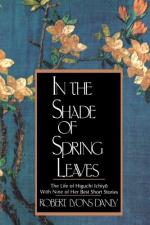|
This section contains 5,006 words (approx. 17 pages at 300 words per page) |

|
SOURCE: "Breaking Out of Despair: Higuchi Ichiyō and Charlotte Brontë," in Comparative Literature Studies, Vol. 24, No. 3, 1987, pp. 251-63.
In the following essay, Enomoto explores parallels as well as differences between the lives and works of Higuchi Ichiyō and Charlotte Brontë, maintaining that both were motivated by a "sense of powerlessness and loneliness" as women writers.
This article will explore the striking similarities and differences between the lives and works of Higuchi Ichiyō and Charlotte Brontë, two leading women novelists of the nineteenth century. Ichiyō was often called "Brontë" by a contemporary Japanese critic, Hirata Tokuboku, and his friends in the Bungakkai (Literary World) group. The first and only work of Charlotte Brontë introduced to Japan during Ichiyō's lifetime was an abridged translation by Mizutani Futô of Jane Eyre, entitled Risô Kajin (An Ideal Beauty, 1896). While no evidence exists of Ichiyō's having read Brontë, Tokuboku noted one...
|
This section contains 5,006 words (approx. 17 pages at 300 words per page) |

|


